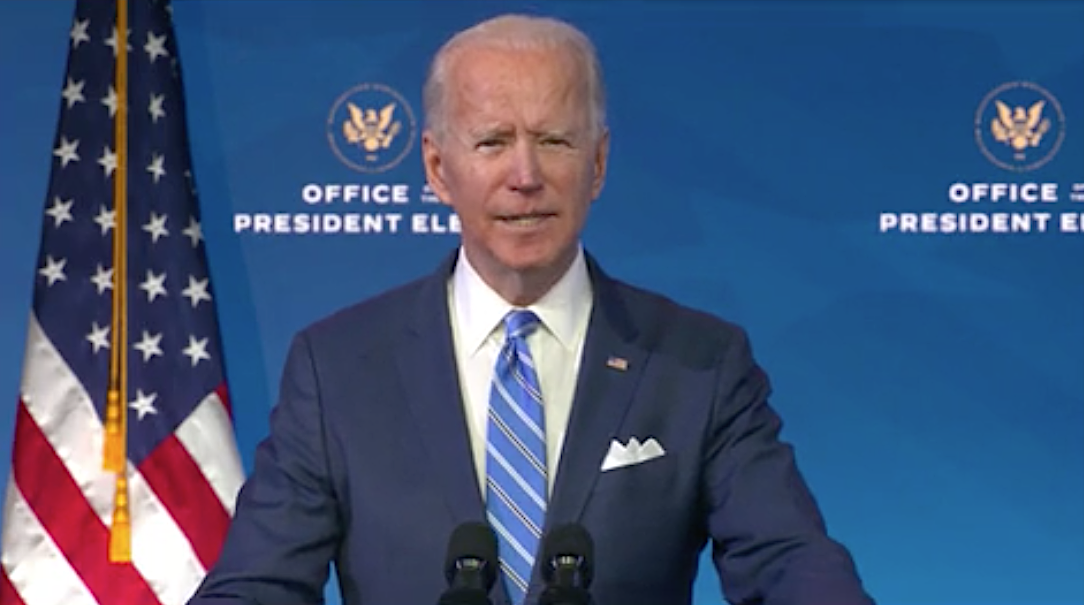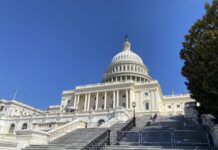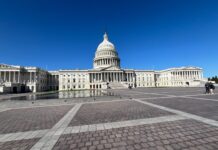
WASHINGTON — President-elect Joe Biden is calling on Congress to approve a sweeping package for economic and pandemic relief with a price tag twice that of the emergency aid passed in December after months of acrimonious negotiations.
Biden’s $1.9 trillion proposal, which he is set to outline in a speech Thursday evening, is framed around boosting funding in three areas: COVID-19 response, including a new national vaccine plan and reopening assistance for schools; aid to working families; and help for struggling small businesses and cash-strapped state and local governments.
The plan will be a first governing test for Biden, who campaigned as someone who could bring together a polarized Washington and stabilize a chaotic, unfocused national response to the COVID-19 pandemic under the Trump administration.
“We are in a race against time, and absent additional government assistance, the economic and public health crises could worsen in the months ahead; schools will not be able to safely reopen; and vaccinations will remain far too slow,” stated a fact sheet from Biden’s transition team detailing the new proposal.
House Speaker Nancy Pelosi and incoming Senate Majority Leader Chuck Schumer pledged their support for the plan in their chambers, both of which soon will be controlled by Democrats.
“We will get right to work to turn President-elect Biden’s vision into legislation that will pass both chambers and be signed into law,” they said in a joint statement.
For millions of Americans, the legislation, if made law, would mean:
- A $1,400 direct payment, supplementing the $600 payment passed by Congress in December’s package, for a total of $2,000;
- Renewal of boosted unemployment benefits, for an additional $400 a week;
- Extended protections against evictions and foreclosures;
- Aid for paying rent and utilities;
- More help with child-care costs;
- A $15-per-hour minimum wage;
- Paid sick and family and medical leave to help those burdened with additional caregiving responsibilities.
The proposal also would send a raft of aid to state governments, including $350 billion in emergency funding for state and local governments to keep public workers on the job, and $35 billion for small-business financing programs.
States also would receive:
- $20 billion in new money for their vaccine distribution efforts;
- Full federal reimbursement for critical emergency response resources, including deployment of the National Guard;
- Money for more manpower in long-term care facilities experiencing COVID-19 outbreaks;
- Funds for emergency housing;
- Additional cash assistance to low-income families;
- Relief for hard-hit public transit agencies.
As part of his goal to have most of the nation’s schools open within the first 100 days of his administration, Biden also is calling for $130 billion in new money to help schools in their reopening efforts.
The dollars could be used for a variety of steps, including reducing class sizes, modifying classrooms, improving ventilation, providing personal protective equipment, and paying for summer school or other support for students to help make up lost learning time this year.
Another $35 billion would go to higher education institutions, with $5 billion that governors can use to aid students, from early childhood through college, who have been significantly affected by the pandemic.
The coronavirus-related portions of the plan total more than $400 billion, including the Biden administration proposal for a national plan to improve the slow rollout of COVID-19 vaccines.
Biden is calling for the launch of community vaccination centers and mobile vaccination units in hard-to-reach areas, and would boost federal dollars to cover the cost of vaccinating all Medicaid enrollees.
His plan also envisions a massive expansion of testing, including regular testing in places like schools and prisons, and aims to expand the public health workforce by funding 100,000 public health workers.
The wide-ranging package he’s unveiled is nearly the size of the initial $2.2 trillion relief measures that Congress approved in late March, known as the CARES Act. While the Democratic-controlled House passed several other aid bills, none reached the president’s desk until December, when both chambers approved a $900 billion COVID-19 assistance bill.
At that time, congressional Democrats described the emergency aid package as only a small piece of what was needed to address the ongoing pandemic, with Pelosi calling it “a first step.”
Since then, Democrats have flipped control of the U.S. Senate, though the party won’t officially hold the majority until two new senators from Georgia are sworn in.
Those flipped seats will bring the chamber to a 50-50 split, with Democratic Vice President-elect Kamala Harris able to break ties after she’s sworn in Wednesday.
But passing legislation through the Senate requires 60 votes. That tally means finding Republican support unless Democrats choose to use a budgetary process known as reconciliation, which would allow them to pass certain bills with just 50 Democratic senators.







